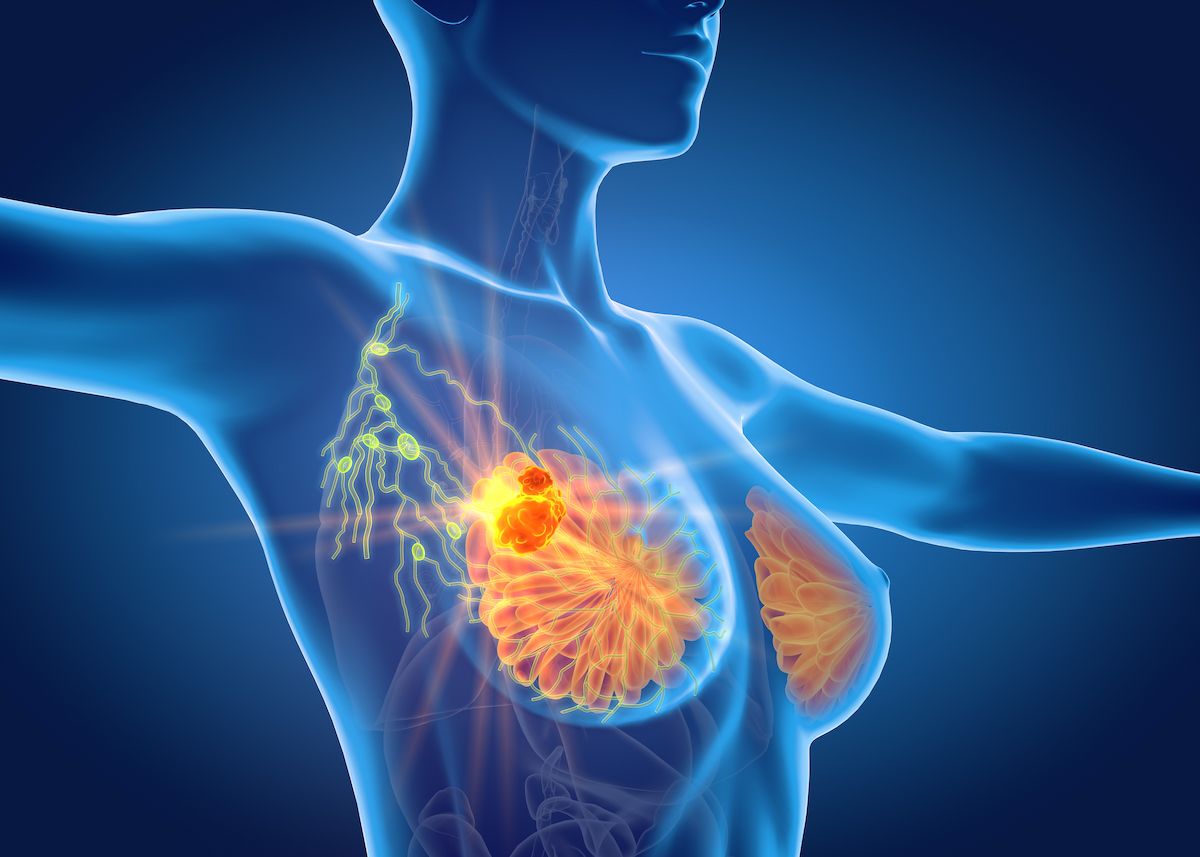Pertuzumab Combo Reduces Risk of Death in HER2+ Early-Stage Breast Cancer
Ten-year data from the phase 3 APHINITY trial will be presented at the 2025 European Society for Medical Oncology Breast Cancer Congress.
According to 10-year follow-up data from the phase 3 APHINITY trial, the addition of pertuzumab to 1-year therapy with trastuzumab/chemotherapy reduced the risk of death by 17% vs placebo as a postsurgery treatment.

The addition of adjuvant pertuzumab (Perjeta) to trastuzumab (Herceptin) and chemotherapy enhanced survival outcomes vs placebo in patients with HER2-positive early-stage breast cancer, according to a press release from the drug’s developer, Roche.1
According to 10-year follow-up data from the phase 3 APHINITY trial (NCT01358877), the addition of pertuzumab to 1-year therapy with trastuzumab/chemotherapy reduced the risk of death by 17% vs placebo as a postsurgery treatment. Among patients treated with pertuzumab vs placebo, 91.6% vs 89.8% were alive at 10-year follow-up (HR, 0.83; 95% CI, 0.69-1.00; P = .044). Additionally, a 21% reduction in the risk of death was observed among a prespecified subgroup of patients with lymph node–positive disease (HR, 0.79; 95% CI, 0.64-0.97); however, no significant benefit was seen in the node-negative subgroup.
Additional efficacy data revealed that the primary end point of disease-free survival (DFS) benefit was maintained (HR, 0.79; 95% CI, 0.68-0.92), bolstering results from previous analyses. The safety profile of the combination regimen, including cardiac safety, was consistent with previous studies, and no new safety signals were identified.
Full results from the phase 3 APHINITY study will be presented in a late-breaking abstract on May 15 at the 2025 European Society for Medical Oncology Breast Cancer Congress.
"After 10 years, the [phase 3] APHINITY trial clearly shows a statistically significant and clinically meaningful improvement of overall survival," Sibylle Loibl, MD, PhD, APHINITY study chair, chair of the German Breast Group (GBG), and CEO of GBG Forschungs GmbH, stated in the news release.1 “Adding [pertuzumab] to a standard adjuvant treatment is most beneficial for people with HER2-positive breast cancer with lymph node–positive disease who are at high risk of recurrence.”
A total of 4804 patients in the phase 3 APHINITY trial were randomly assigned 1:1 to receive trastuzumab, chemotherapy, and either pertuzumab or placebo. Patients in the pertuzumab arm were treated with an 840-mg loading dose of the agent followed by 420 mg intravenously every 3 weeks for 1 year or a maximum of 18 cycles.2 Those in the control arm received matching placebo intravenously every 3 weeks for 1 year or a maximum of 18 cycles.
Patients in both arms received 8 mg/kg of trastuzumab as a loading dose followed by 6 mg/kg intravenously every 3 weeks for 1 year or a maximum of 18 cycles. Chemotherapy consisted of one of the following: three to four 3-week cycles of 500 to 600 mg/m2 of 5-fluorouracil, 90 to 120 mg/m2 of epirubicin or 50 mg/m2 of doxorubicin, and 500 to 600 mg/m2 of cyclophosphamide followed by either 3 to 4 cycles of 75 to 100 mg of docetaxel every 3 weeks or 12 cycles of 80 mg/m2 of paclitaxel once weekly; 4 cycles of 60 mg/m2 of doxorubicin or 90 to 120 mg/m2 of epirubicin plus 500 to 600 mg/m2 of cyclophosphamide every 3 weeks followed by 3 to 4 cycles of docetaxel every 3 weeks or 12 cycles of weekly paclitaxel at the aforementioned dose; or 6 cycles of 75 mg/m2 of docetaxel every 3 weeks plus carboplatin area under the curve 6 for a maximum of 900 mg.
The coprimary end points of the trial included the occurrence of invasive disease-free survival (IDFS) events and Kaplan-Meier estimates of the proportion of patients who were free of IDFS events. Secondary end points included DFS, overall survival, recurrence-free survival, safety, and patient quality of life.
References
- Ten-year APHINITY data show Roche’s Perjeta-based regimen reduced the risk of death by 17% in people with HER2-positive early-stage breast cancer. News release. Roche. May 12, 2025. Accessed May 13, 2025. https://tinyurl.com/45k4xpbx
- A study of pertuzumab in addition to chemotherapy and trastuzumab as adjuvant therapy in participants with human epidermal growth receptor 2 (HER2)-positive primary breast cancer (APHINITY). ClinicalTrials.gov. Updated January 13, 2025. Accessed May 13, 2025. https://tinyurl.com/2k5scb39